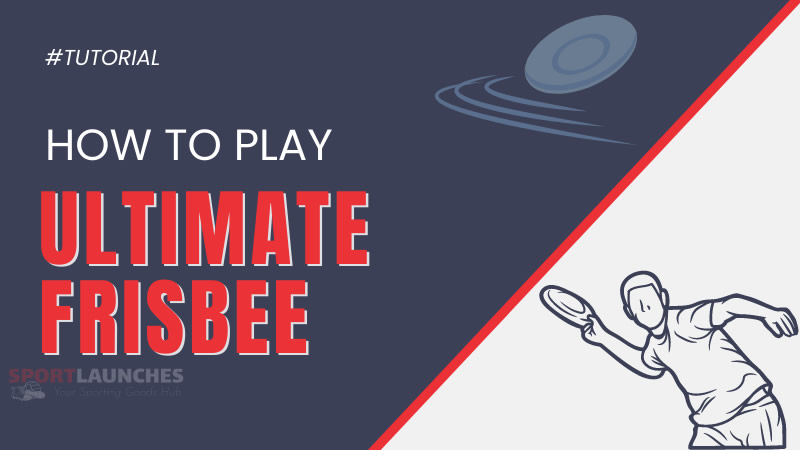
How to play ultimate frisbee
Ultimate, ultimate flying disc, ultimate frisbee, or whatever you want to call is not difficult to play. In fact, when compared to other lesser-known sports like broomball, it is relatively easy with fewer steps to follow.
However, even with a few steps to follow, it is important to know and respect the rules of Ultimate Frisbee.
Let’s see step-by-step how to play ultimate frisbee.
To start a game of ultimate frisbee, you need 14 people. So, either you gather your friends and family members, or you can join a local team.
Those 14 people must be divided into two even teams. Each team must have 7 players.
You do not have to follow any rules when creating teams.
In ultimate frisbee, each team is allowed to have up to 5 substitute players. An active player can only be replaced by a substitute player during a timeout or an injury timeout.
The winning team can decide if it starts on offense or defense. The other team then gets to choose which end of the field they want to start on.
Once it is determined which team starts the game, each team must take its place. The field has two end zones located on opposite sides of the field. Each team must line up at the front of opposite end zones.
Now, if you are completely new to the world of ultimate frisbee, I am sure you want to know one thing already: what is a pull in ultimate frisbee, or what does pull mean?
A “pull” in ultimate frisbee is when the defensive team throws or “pulls” the disc to the other team to start the game.
Every time a goal is scored, both teams switch ends, and the game starts again with a new pull.
How to pull the disc in ultimate frisbee?
In ultimate frisbee, you can pull the disc from the ground or the hand. Whichever method you prefer, you must know that the disc must travel at least halfway down the field.
You have to know two other things when you possess the disc:
- You need to pass it to another player within 10 seconds. This period of 10 seconds is called a stall in ultimate frisbee.
- You are not allowed to run or walk with the disc. You are only allowed to defend the disc by pivoting with one foot. If you catch the disc, you must stop running or walking, protect the disc from the defender (marker) by pivoting with one foot, locate your nearest teammate, and pass it to them.
Ok, you have 10 seconds to pass the disc, but who counts the 10 seconds before a stall is called?
The defender, who is also referred to as the marker, is responsible for counting the 10 seconds. Keep this in mind if you plan to play as the marker.
But, hold on! What is a turnover in ultimate frisbee, right?
A turnover in ultimate frisbee is when a player drops the disc, throws it out of bounds, etc, and the opposing team gains to right to take possession of the disc.
When a turnover happens, then the player of the opposing team must throw the disc immediately. The turnover takes place in the exact same locations where, for example, the disc was dropped.
If the disc went out of bounds, the opposing team must bring it back into play by placing it at the spot where it crossed the out-of-bounds line but inside the playing field.
The last thing the player of the opposing team must do before throwing the disc is touching the ground with it first.
*** Avoid making physical contact with any other player on the field. Even when you play in defense, do not touch the other players. It’s important to remember that ultimate frisbee is a non-contact sport.
When is a goal scored in ultimate frisbee?
The goal in ultimate frisbee is scored when one of the team’s players catches the disc in the opponent’s end zone.
It’s important to know that there is no limit on time or throws when scoring a point. Your team can score a point with a single throw or as many throws as necessary to score.
The first team that reaches 15 goals wins the game.
Ultimate Frisbee Positions
What are the positions in ultimate frisbee, you may ask? Well, this sport has numerous strategic positions on the field, and what’s interesting is that the positions of the offensive and defensive teams are not the same.
The offensive team has various positions depending on their strategy. Some offensive players handle the disc more than others, while others focus on making quick movements to be ready to receive passes.
The defensive team also has unique positions to prevent the offensive team from scoring. Some players focus on guarding the player with the disc, while others protect their end zone.
Let’s take a closer look at each position and its role in the field.
Offense/Offensive Team
1. Handler
The handler is the player responsible for handling the disc.
Disc handling involves movements like catching it while on the move, and throwing it accurately. This position also requires being calm under pressure, and speed.
Why speed? Because you have to be able to move quickly and pivot against the defender.
2. Cutter
The cutter is the player who supports the team’s handlers by making strategic cuts and running patterns to get the disc from them.
To play in this position, you need speed and focus, as well as great field awareness. A good cutter uses their intuition developed through experience to be where the handler needs him/her.
3. Zone Offense
When your team decides to use the Zone Offense strategy, new roles will appear. This strategy is typically used as a response to the defensive team’s Zone Defense strategy.
In this strategy, the handlers typically remain in the same position while other players take on new roles. These new roles are:
4. Poppers
In the Zone Offense strategy, the traditional cutter becomes a popper.
This position is responsible for handling quick passes received from the handlers and must always be alert to find quick wins for the team. The popper needs to be able to throw the disc incredibly fast and occasionally make deeper throws.
5. Wings/ Deeps
The Wing is the last position for the offensive team and is also known as the deep position.
This position must distract the opponent. Its main responsibility is to make the deep defender lose focus on the disc.
Sometimes, this position may not receive the disc at all but still contributes to the team’s success by taking care of the field. However, the wing must be prepared to make jumps to catch the disc.
Defense/Defensive Team
1. Cup
The Cup is a position on the defensive team that must run the most during the game.
All cup positions need to stay close to each other to effectively defend. This position is also responsible for chasing the player on the opposing team that carries the disc.
2. Deep Deep/Monster
The deep deep is one of the most vital positions in the team.
This position is the one that guards the defensive team’s end zone. They do not run during the game, but they read the field. By reading the field they provide insightful information to the other players.
3. Short deep/Middle flat
Short depth acts as a true linebacker for other positions.
What positions should the short deep defend? All positions he/she considers to be in danger during the game. The player occupying this position must have a solid knowledge of the basics and rules of the game. Additionally, the short deep must move and act quickly.
4. Wings
Like the offensive team, the defensive team also has a wing position, which is often filled by beginners because it does not require advanced skills.
Positioned near the sideline, the winger’s primary responsibility is to advance the disc along the sideline. In addition, he/she must listen to the instructions coming from the deep deep position.
Ultimate Frisbee Skills
Ultimate frisbee has a component that not a lot of sports have, which is the frisbee or the disc.
The throwing and catching of the disc involve some special movements and skills, which is why beginner players can sometimes feel insecure.
For beginners, throwing and catching the frisbee can be a challenge, but is it really that complicated? No, not at all. Catching and throwing the disc can be mastered by anyone with practice. As in any other sport, practice makes the ultimate difference.
To practice, you first need to know the moves and how to execute them. Below, I have taken each skill one by one and broken it down into small and easy steps for you.
Throwing
1. Backhand Throwing
Backhand throwing is the most used skill in this sport. But how to throw a backhand in ultima frisbee?
In order to throw a backhand in ultimate frisbee, it’s important to ensure that you have a secure grip on the disc.
The steps of a backhand throw are:
- Use your fingers and catch the rim of the disc while keeping the thumb on top. Your fingers must be slightly curled under the rim.
- Stand with your feet hip-width apart and step back with the non-throwing foot. If you use your right hand to throw the disc, step back with the left foot. If you use your left hand to throw the disc, step back with the right foot. Always face the direction you want to throw the disc.
- Now, start to use your lower body and put weight onto your left back foot.
- Swing your arm across your body and rotate your right shoulder away from the target.
- Your wrist should be bent inwards towards your body. Now, you have to release the disc.
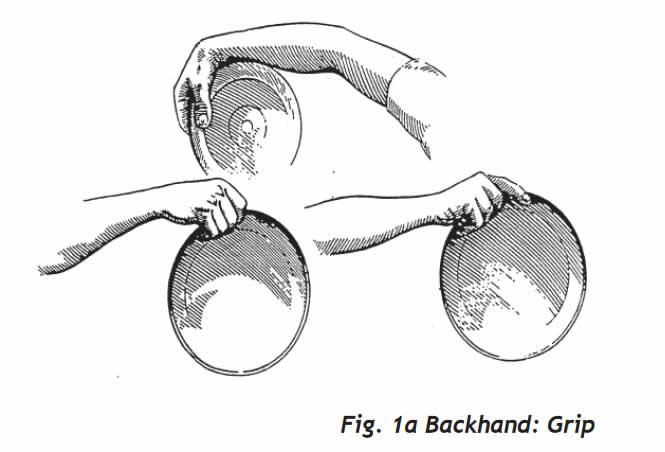
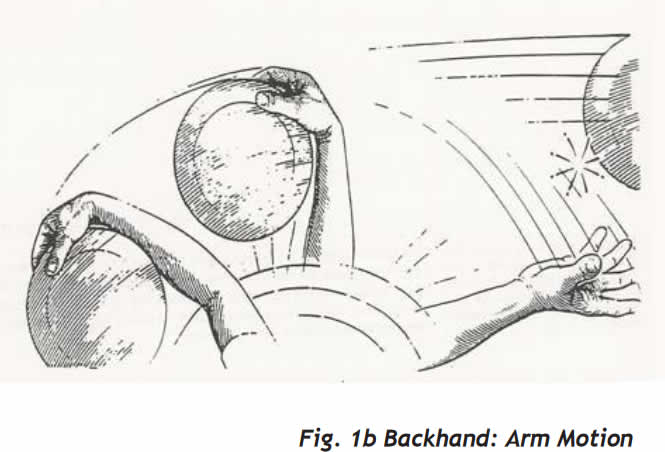
2. Forehand Throwing
For a great forehand throw, follow these steps:
- Place your thumb on top of the disc so that the rim makes contact with the web between your thumb and index finger.
- Place the index finger next to the middle finger for support.
- Use your thumb to get a comfortable and firm grip on the disc.
- Place your feet shoulder-width apart and align your body with the target direction.
- Bring your arm back away from the target and, at the same time, shift weight to the foot.
- Rotate hips and shoulders for body rotation and lower the shoulder.
- Release the disk.


Catching
1. Pancake Catch
Most of the ultimate frisbee players use the pancake catch because is it one of the safest methods to catch the disc. You can use this type of catch when the thrown disc is somewhere between your waist and chin level.
This move is quite easy, you just have to:
- See when the disc comes toward you.
- As the disc comes closer to you, open your arms and extend them forward.
- Place one arm below the other one. Both palms should be facing each other.
- Slightly bend your elbows.
- Catch the disc by bringing the hand closer to each other.
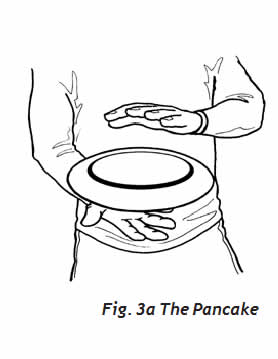
2. Two-Handed Rim Grab
When you see the disc approaching you below the waist or chin level, you can try the two-handed rim grab. Although not as secure as the pancake catch, this type of catch can be useful in certain situations.
To make a two-handed rim grab:
- Extend your arm towards the disc as you see it coming.
- If the disc is above shoulder level, extend your thumbs down.
- If the disc is below shoulder level, extend your thumbs up.
- As with the pancake catch, your elbow should be slightly bent.
- Grab the disc with both hands simultaneously.
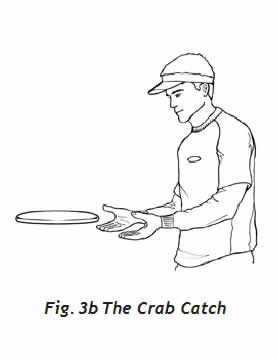
Marking
The defender, also known as the marker, is responsible for marking the thrower. As soon as the opposing team gains possession of the disc, the defender should begin marking the player in possession.
Marking is all about blocking and limiting the directions that the thrower could use to pass the disc without making contact.
While marking, you should:
- Keep your feet light to allow for quick movements.
- Bend your knees to stay low and ready to move.
- Follow the thrower’s pivots and move simultaneously with them.
- Maintain your balance by keeping your feet close to shoulder-width apart.

Cutting
To be able to get open and receive a pass from your teammates, you must learn cutting. Cutting is a vital skill in ultimate frisbee that creates opportunities on the field. To execute this skill, you need to have good footwork and be aware of where the disc is at all times. Below are the steps of a full cut.
1. Full Cuts
- When performing a full cut, first run in the opposite direction of where you ultimately want to go.
- You must convince your defender that you are truly making a cut in that direction by running as fast as you would if you were going that way.
- After 5-6 steps, or when your defender is also at full speed, plant your outside foot and quickly change direction, running in the opposite direction.
Ultimate Frisbee Strategies
To score in ultimate frisbee, you need the skills presented above. However, winning the game also requires the use of strategies. By implementing special strategies, you and your team can surprise the opposing team. Additionally, a well-executed strategy can increase your team’s chances of success.
How to win ultimate frisbee? You and your team can win ultimate frisbee by using the two most common strategies known as the vertical stack and horizontal stack.
1. The horizontal stack
This strategy is for the offensive team in ultimate frisbee. It is designed to create space around the team’s thrower in order to advance the disc down the field.
Below you can find a simpler explanation of this strategy:
- Three of the team’s handlers must position themselves horizontally with the disc.
- At the same time, four cutters must align horizontally beyond the disc.
- Once the disc is thrown, the players in the horizontal stack start cutting toward the thrower, creating space for a potential pass.
- All the other players outside the horizontal stack must make cuts as well.
- Make sure you and your team use all the space on the field. Spread out and create passing lanes.
2. The vertical stack
Another offensive strategy is the vertical stack. The idea behind this strategy is to create space for the players to make cuts and receive passes.
The steps of the vertical stack strategy are:
- Two handlers of the team must position themselves vertically at the back of the field.
- The cutters should line up upfield in a row.
- When the disc is thrown, the cutters must move toward the thrower by making cuts.
- Cutters must always be aware of the 10-second rule, as their cuts should be timed with the handler’s throw.
- As in the horizontal stack, players must use the entire field.
Ultimate frisbee Terms
Want to familiarize yourself more with this sport? Then, take a look also at terms that are commonly used when playing this sport.
- Cut – an explosive movement made by a player from the offensive team to catch or pass the disc thrown by his/her teammates.
- Foul/Contact – foul occurs when two players from opposing teams touch, push, hit, or grab each other during the game.
- Marker – the player from the defensive team that blocks the thrower to make a pass to another teammate.
- Stall count – the amount of time that the thrower has to pass the frisbee to another player. The thrower must pass the disc within ten seconds.
- Pull – the opening throw of the disc when the game starts or re-starts when a new point is scored. It is also the longest throw made by one team to the other, aimed to send the frisbee as far down the field as possible
- Pick – is a violation. This happens when an offensive player blocks a defender’s path. The offensive player stays so close to another teammate that the defender can not play without making physical contact.
FAQs
How many steps can you take in ultimate frisbee?
In ultimate frisbee, you can take as many steps as you want when you do not have the disc. When you have the disc, you are not allowed to do any steps.
Can you run with the frisbee in ultimate frisbee
No, you cannot run with the frisbee in ultimate frisbee. The rules of the sport say that when a player receives the disc, he/she must stop running and walking.
Are people allowed to make contact in ultimate frisbee?
No, people are not allowed to make contact in ultimate frisbee. This is a non-contact sport and players should keep a certain distance when playing to make sure they do not touch each other.
Are there referees in ultimate frisbee?
There are no referees in ultimate frisbee because players are expected to take responsibility for their own actions and maintain a sense of fair play.
Is ultimate frisbee dangerous?
No, ultimate frisbee is not dangerous because it is not a contact sport. Players are not allowed to make contact and therefore, it is a safe sport.
Bibliography:
– USA Ultimate / usaultimate.org (Credit for images)
– Development of Frisbee in the US and Canada. May 11, 2019. Retrieved September 29, 2022. / discsportshistory.com/ultimate-frisbee-history-in-canada
– World Flying Disc Federation / wfdf.sport/disciplines/ultimate
